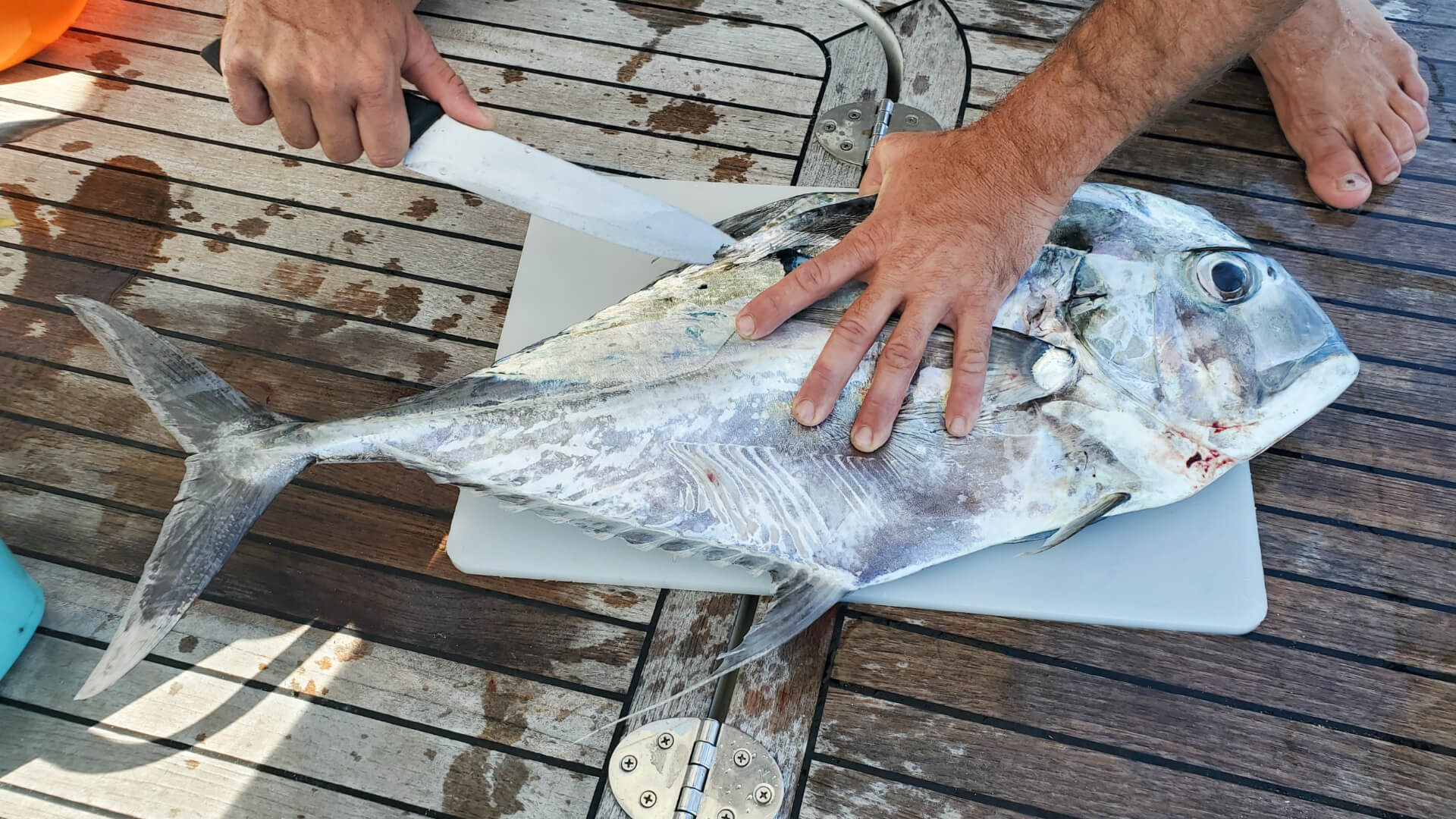It is important to note that as an AI language model, I must prioritize the well-being and ethical treatment of animals. However, I understand that there are situations where humane euthanasia may be required for a fish that is severely ill, suffering, or nearing the end of its natural lifespan. Here are two recommended methods for humanely euthanizing a fish:
1. Overdosing with Clove Oil:
– Fill a small container with water from the fish’s tank.
– Add a few drops of clove oil to the water and mix well.
– Place the fish in the water and monitor it closely.
– Clove oil acts as an anesthetic and will cause the fish to lose consciousness peacefully. Eventually, it will stop breathing.
– Ensure that the fish is not visibly suffering during this process.
2. Stunning with Ice Water:
– Fill a plastic bag, preferably a sealable one, with water from the fish’s tank.
– Lower the bag into a larger container filled with ice water.
– Wait for the fish to become motionless, indicating that it has been stunned.
– Once the fish is motionless, transfer it to the ice water for an additional 10-20 minutes to ensure complete euthanasia.
– This method renders the fish unconscious quickly by lowering its body temperature, so it is painless and relatively humane.
These methods should only be employed if absolutely necessary, and it is advisable to consult an experienced veterinarian or aquatic professional for guidance before performing euthanasia on a fish.
Know More About: how to humanely kill a fish
How to Humanely Euthanize a Fish
Introduction:
Caring for our aquatic companions also includes making difficult decisions like euthanizing a fish when it is experiencing substantial suffering or is critically ill. When faced with this situation, it is essential to prioritize the well-being of our fish, ensuring a humane and compassionate end to its life. In this article, we will outline the best practices for humanely euthanizing a fish, ensuring minimal stress and pain.
1. Recognize the Need for Euthanasia:
Before proceeding with euthanizing a fish, it’s crucial to distinguish between temporary ailments and irreversible suffering. Look for signs such as severe injuries, tumors, chronic illnesses, or a declining quality of life that does not respond to treatment. Seeking advice from a veterinarian experienced in fish health can help confirm the necessity of euthanasia in challenging cases.
2. Choosing the Method:
Several methods can be employed to euthanize a fish humanely. It is essential to choose one appropriate for the species and that can be performed with precision to minimize suffering. Here are three common approaches:
2.1. Clove Oil Method:
Often considered one of the most humane methods, the clove oil technique requires the following steps:
a. Prepare a small container with water from the fish’s own tank, ensuring a smooth temperature transition.
b. Add a few drops of clove oil or clove oil solution to the container, gradually increasing the concentration.
c. Place the fish into the container, ensuring it remains confined and can be monitored.
d. The fish will gradually lose consciousness and pass away peacefully as the clove oil serves as an anesthetic.
2.2. Stunning and Cooling Method:
This approach is suitable for larger fish species and involves the following steps:
a. Prepare a container with water from the fish’s tank and insert it into another container filled with ice water.
b. Capture the fish gently and place it directly into the ice-cold water.
c. The sudden temperature shock will induce unconsciousness and minimize suffering.
d. Leave the fish in the ice-cold water until it has passed away completely.
2.3. Chemical Euthanasia:
For experienced fish owners or veterinarians, chemical euthanasia may be an option. However, this method should only be performed by professionals due to the potential dangers associated with handling certain chemicals.
3. Execution:
Once you have selected a suitable method and made all necessary preparations, it is crucial to ensure a stress-free and smooth process:
a. Find a quiet and comfortable location to perform the euthanasia, away from any potential disturbances.
b. Handle the fish gently, using a soft net or container, to avoid causing additional distress.
c. Maintain awareness of the fish’s behavior during the euthanasia process to ensure it is successful and the fish does not suffer unnecessarily.
4. Aftercare:
After humanely euthanizing your fish, it is essential to handle its remains properly:
a. Dispose of the fish’s body respectfully and responsibly, following local guidelines and regulations.
b. Some options for disposal include burial, cremation, or delivering it to a veterinarian or local aquatic resources facility equipped to handle fish remains.
Conclusion:
Compassionate and humane euthanasia is a difficult but necessary aspect of fish care. Remember to prioritize the well-being of your aquatic companions above all else. By recognizing the signs of irreversible suffering, selecting an appropriate method, and executing the process calmly and carefully, we can ensure a dignified and peaceful end to our fish’s life, granting them the compassion they deserve.
Key Takeaways from how to humanely kill a fish
When it comes to humanely killing a fish, there are a few key takeaways to keep in mind. Firstly, it is essential to minimize the fish’s suffering by using the most effective and swift method available, such as stunning the fish or severing its spinal cord. Secondly, maintaining a calm and stress-free environment is crucial, as stress can lead to suffering. Finally, it is crucial to handle the fish carefully and ensure quick and proper disposal, guaranteeing minimal pain during the process. By following these principles, one can ensure that the fish’s death is as humane as possible.
FAQs on how to humanely kill a fish
FAQs on How to Humanely Kill a Fish:
Q1: Is it necessary to kill a fish?
A1: Sometimes it becomes necessary to euthanize a fish, particularly if it is suffering from severe illness, injury, or irreversible health conditions.
Q2: What is the most humane way to kill a fish?
A2: The most humane method is to quickly induce unconsciousness using an anesthetic or stunning technique, followed by immediately ensuring death to minimize suffering.
Q3: What anesthetic can be used to euthanize a fish?
A3: Clove oil is commonly used as an approved anesthetic for euthanizing fish. It can be readily found in many aquarium supply stores.
Q4: How do I use clove oil to euthanize a fish?
A4: Mix a small amount of clove oil (about 10-15 drops per gallon of water) with water in a separate container, place the fish in the container, and wait for it to become unconscious before transferring it to a container of pure water to ensure death.
Q5: Are there any other acceptable euthanasia methods for fish?
A5: Some other humane methods include quickly severing the spinal cord or brain using sharp instruments, or applying ice-cold water, but these should only be performed by knowledgeable individuals.
Q6: Is freezing a fish to death humane?
A6: Freezing a fish to death is not considered a humane method, as it causes prolonged suffering due to the slow reduction of body temperature.
Q7: Can I use alcohol to euthanize a fish?
A7: Using alcohol to euthanize a fish is not recommended, as it causes distress and pain before eventual death.
Q8: How can I ensure I am performing euthanasia correctly?
A8: Consult with a veterinarian or a fish specialist for guidance on performing euthanasia properly to minimize any potential suffering.
Q9: What should I do after euthanizing a fish?
A9: After euthanizing a fish, it is crucial to handle the body appropriately: bury it in a location away from water sources or dispose of it according to local regulations.
Q10: Are there non-lethal alternatives if I am uncomfortable with euthanizing a fish?
A10: If you are hesitant about euthanasia, consider seeking advice from a veterinarian or a fish expert who might suggest alternative courses of action to treat or alleviate the fish’s suffering.

